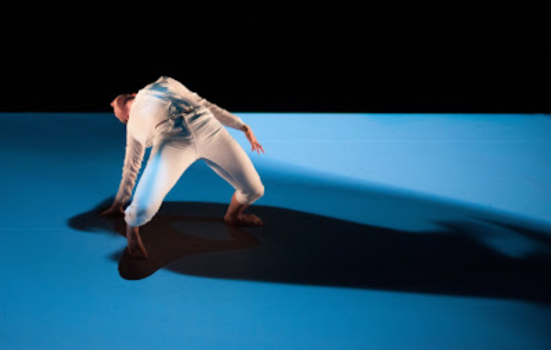National Portfolio Organisations with the highest levels of public funding three times more likely to be working with universities on arts and culture research than those with lower levels of subsidy.

Chris Nash
Smaller National Portfolio Organisations (NPOs) should be encouraged to build relationships with arts and culture researchers to help sustain the cultural economy, a study has recommended.
A report looking at the impact of research specifically related to arts and culture from the 2021 Research Excellence Framework (REF) recommends that smaller arts organisations receive support to develop the “capacity” to form connections with academics at the same level that larger, more well-funded NPOs are able to do.
Undertaken by the National Centre for Academic and Cultural Exchange (NCACE), the study found that more than 80% of the 50 top-funded NPOs were connected to research institutions, compared with 26% of 50 smaller NPOs that were supported by annual funding in the region of £200k. However, of those smaller NPOs with academic connections, almost 40% were found to be engaged in multiple research projects.
READ MORE:
- Big drop in arts and humanities PhD students
- Audit highlights UK's 'world-leading' art and music research
The report looked at two sub-samples of five NPOs participating in higher education institution (HEI) research, drawn from either the top or the middle of the portfolio, finding that although the former had greater levels of academic activity, evidenced by citations, the amount of research funding aligned with those smaller organisations was higher. The larger NPOs generated 20 research citations, supported by £9.6m of funding, while the 14 citations of the smaller NPOs were supported by £10m of investment.
"We see a particularly strong correlation between the volume of research and levels of funding," the report states.
"With factors such as scale, capacity and perhaps also kudos or ‘cultural capital’ more broadly implicit here too."
The findings show that where relationships between NPOs and HEIs exist, they act as “the impetus to drive and support wider cultural, social and economic transformations".
ACE's role in research
Arts Council England (ACE) was found to be the second most frequently cited funder of research undertaken in collaboration with NPOs, after the Arts and Humanities Research Council.
The report noted the “tacit role of NPO funding” in supporting "human resources and other operational and management costs" that contribute to the capacity of arts organisations to engage in research. It suggested that more could be done to publicly convey the function ACE plays in supporting research and that there might be benefits to connecting with other funding bodies for “more ambitious and joined-up funding mechanisms for the arts”.
Speaking to Arts Professional, Co-Director of NCACE Evelyn Wilson said: “Historically, we can see how important ACE has always been in terms of these relationships, and I don't think that's always been something that has been talked about that much.
“There's a real opportunity to shine a light and to amplify the fact that, indeed, the arts and culture sector is a really vital part of research ecology.
“It's not just that the arts are benefiting from research; it is that the arts are playing a very key role in actually really helping research impact as well.”
In response to the findings a spokesperson for ACE said, “Research and cross-industry collaboration are essential for the success of the creative sector. We’re pleased to invest in a wide variety of research, providing evidence and data to help the creative sector in various ways, whether developing ambitious work that inspires audiences or improving their own organisational resilience, from business and innovation through to environmental impact.”
Confidence building
A separate survey published by NCACE in 2021, which looked at collaboration between universities and 500 arts organisations - including but not limited to research - noted that “working with universities is not an automatic route to cash or funding”.
Half (50.6%) of the survey's respondents said their university partner played a key role in funding their collaboration, with the second most reported funding source being the cultural organisation itself. ACE (28%), trusts and foundations (22.8%), the Arts & Humanities Research Council (14.8%) and local authorities (13%) were other key sources of funding.
Wilson said: “One of the things learned [in the 2021 survey] was that organisations with more than one university relationship said they felt more confident in areas like fundraising.
“If you are used to working in a collaborative way, then it is very likely that you're probably used to dealing with multiple stakeholders, maybe multiple funders, on multiple projects.”
Wilson also stressed that there can be benefits to arts organisations building relationships with HEIs outside of research too.
"It doesn't have to be really big, scary partnerships with lots of agreements happening over two or three years," she said.
"It can be really light touch stuff - if you're organising a programme of events, and you want to bring people in to give talks - it can be that simple. And very often, those are the ways in which you can build that relationship. And that doesn't take a huge amount of capacity.
In its recommendations, the report also suggested smaller NPOs hoping to engage in research could benefit from peer learning, small-scale seed funding and rewarding R&D in tax incentivisation for the arts.
Wilson said: “There is real strength in the system, but it could be better supported by more joined-up thinking, creating pots of funding that will really actually enable brilliant new partnerships to arise aligned to things that are important both to the arts and research, and profound social impact.
“I think it would create a far richer ecology if funding mechanisms were put in place that absolutely recognised the agency of both the arts and the universities and the generation of such impacts.”




